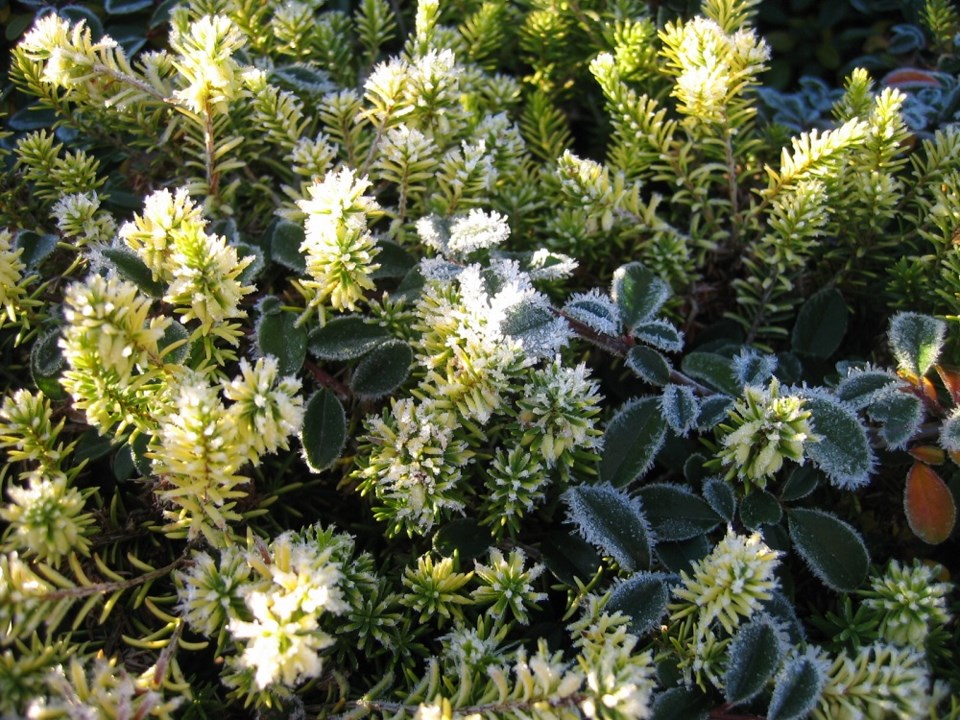What a wonderful winter so far, especially when compared to last year’s long, bitter cold spell which resulted in so much damage to so many of our plants.
Depending upon which long-range weather forecast you consult, January and February look like they’re going to be quite mild as well.
Our greatest concern is having a cold spell at the end of February, just when many plants are breaking dormancy….fingers crossed, we’ll be okay.
When we do go out in our garden this time of year, there are a few things we should keep an eye on.
If you can make a point of checking things out after a heavy rainfall, you’ll be able to pinpoint where water is sitting.
In either your lawn or garden, pooling water is not a good thing. If it is in your lawn, it would be important to use a hand aerator to open up that soil. Then add about a quarter inch of sharp or washed sand to work into the holes. Keep watch on the area and keep repeating, if necessary, until drainage has improved.
If water is sitting in your garden area, when it dries out a bit, work in a ratio of about fifty percent fine fir or hemlock bark mulch or sawdust to the soil. This will lighten up the soil and allow for better drainage all through the spring months and beyond. All your plants will benefit greatly.
If you have shade, flowering, or fruit trees and shrubs, take a look at the bark on the branches. If they are full of moss and algae some treatment is in order. An application of lime sulphur, combined with horticultural oil, sprayed three times about three to four weeks apart, will clean them up and promote better tree health. The organic horticultural oil will also help control overwintering insects which can damage your trees.
Some of the most susceptible shrubs are hibiscus, or Rose of Sharon, flowering currants, and small fruits like gooseberries. Remember; do not spray nut trees, viburnums and maples, which cannot tolerate this mix on their bark.
With our mild weather, a good deal of pruning can be done now. It’s important to remember that proper pruning will improve the health of our trees by allowing better air flow and more sunlight penetration into them. It will improve fruit and flower production as well. It’s important to leave early flowering shrubs alone to enjoy their flowers; then prune them. Roses should only be pruned back after the last hard frost in spring.
Untidy perennials and grasses can also be pruned back this time of year, allowing clean new growth to break through when they begin their spring cycle.
When its 10°C or higher, remember that some of our bees will be out looking for both nectar and pollen. It's nice to have at least one winter flowering shrub in bloom each month to help these valuable pollinators.
A garden walk, even around your small space garden, is very important this time of year to stay ahead of potential problems down the road!



